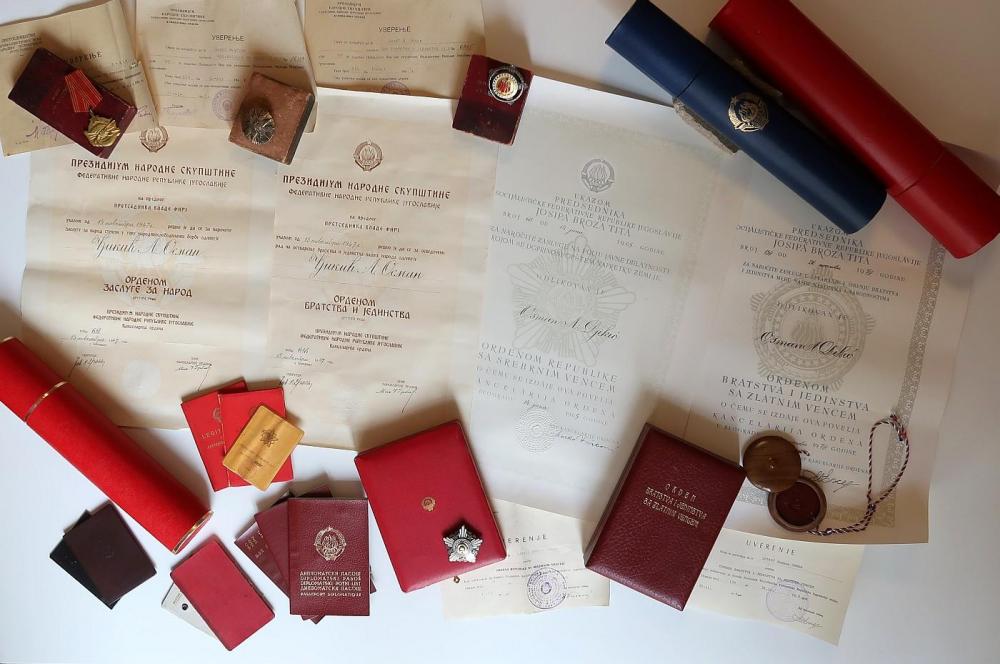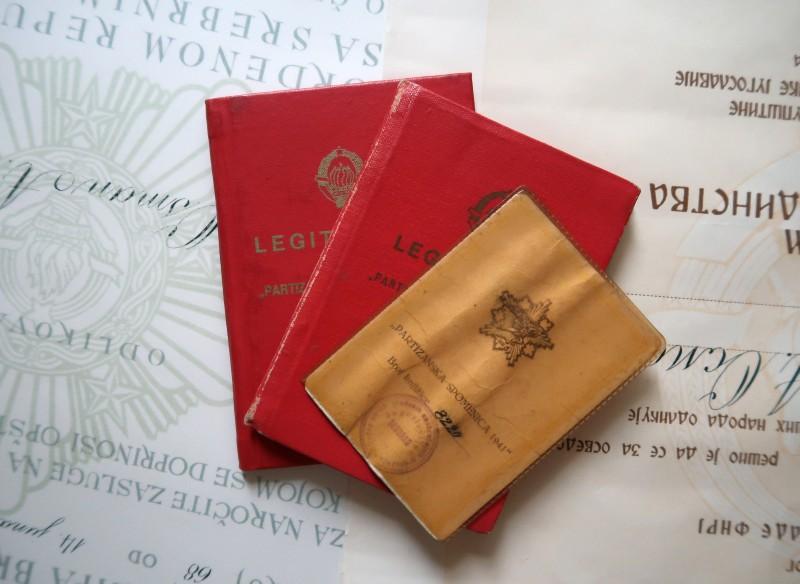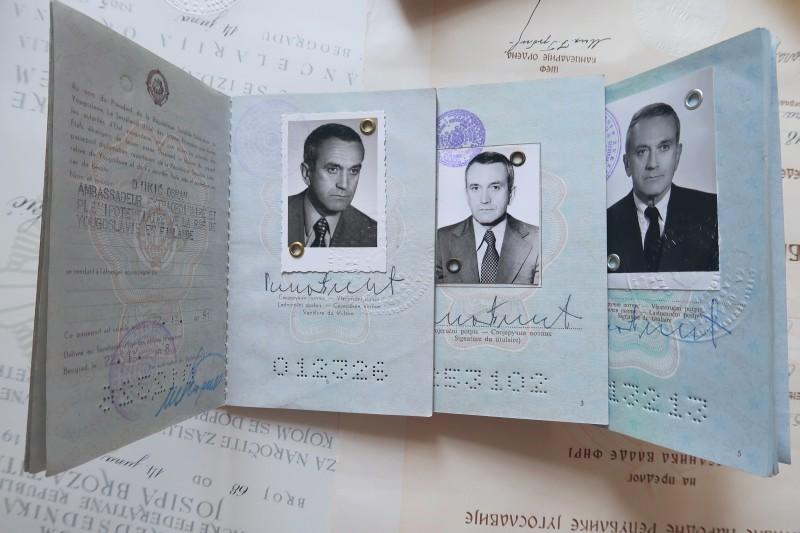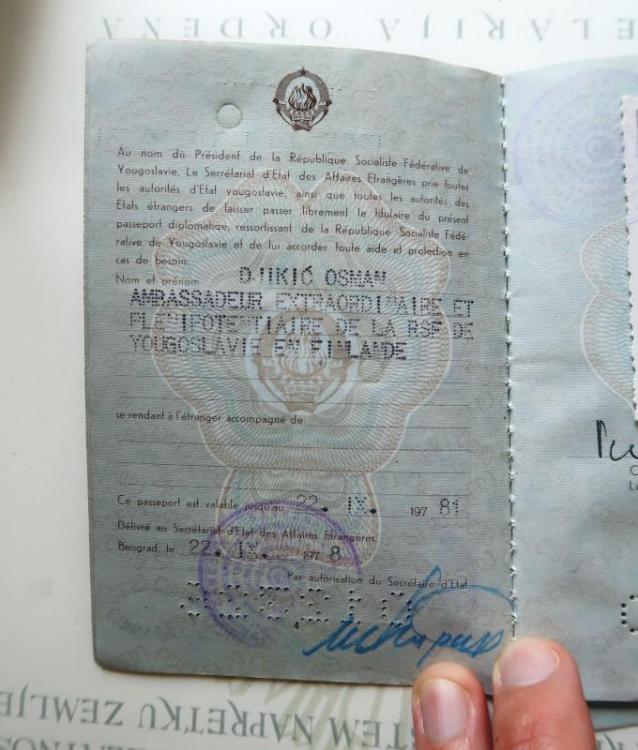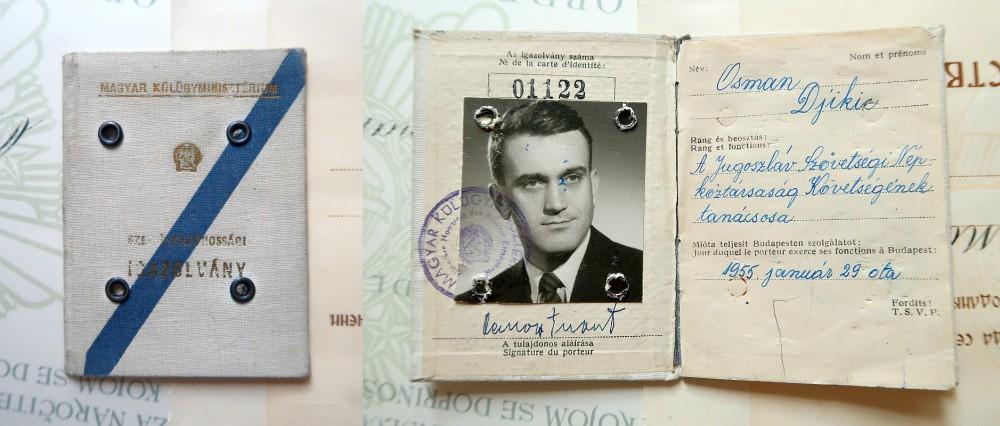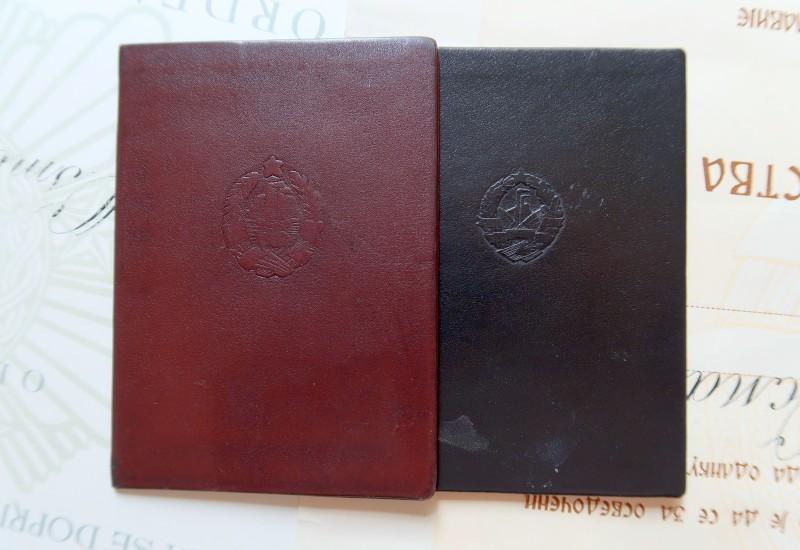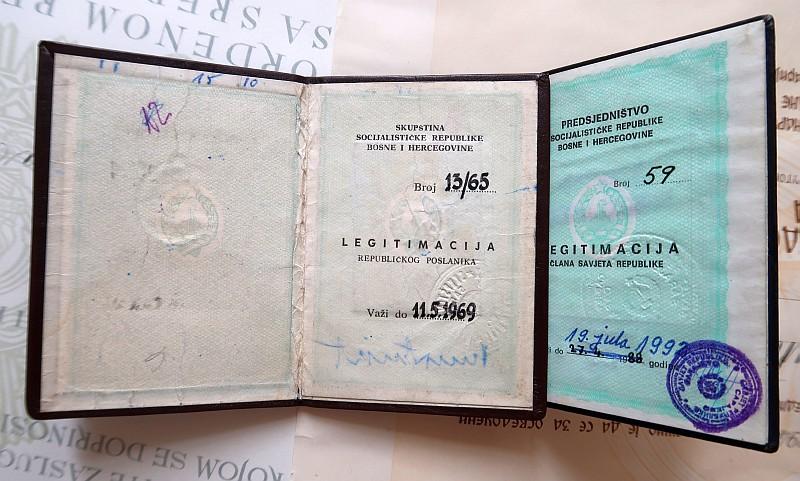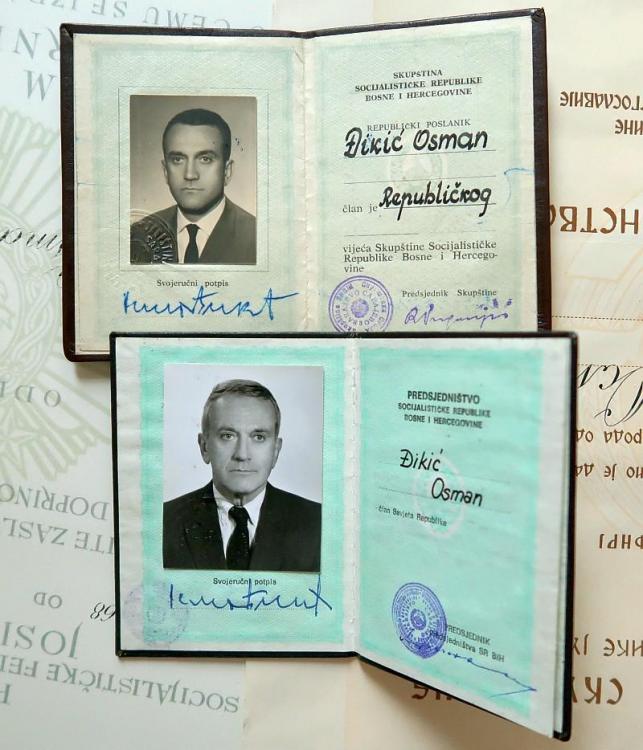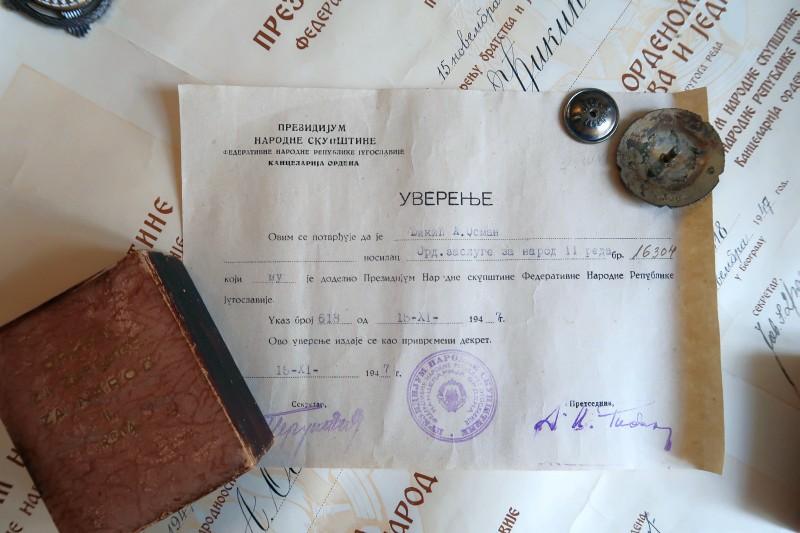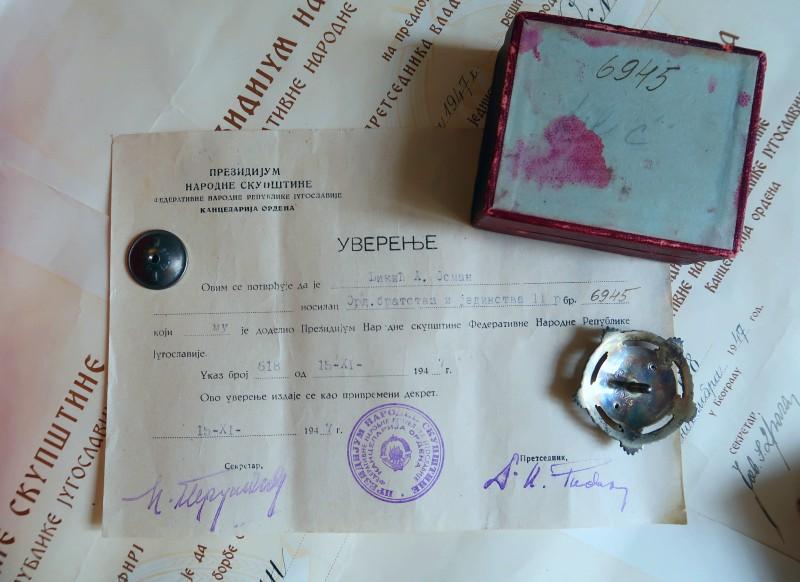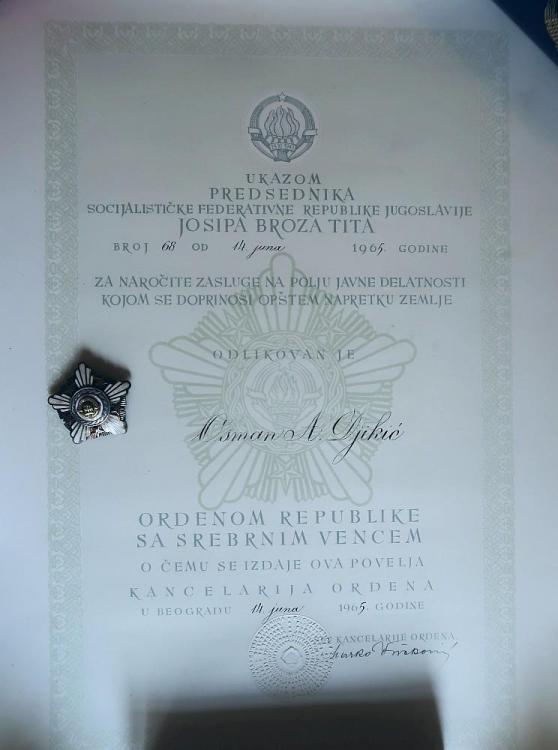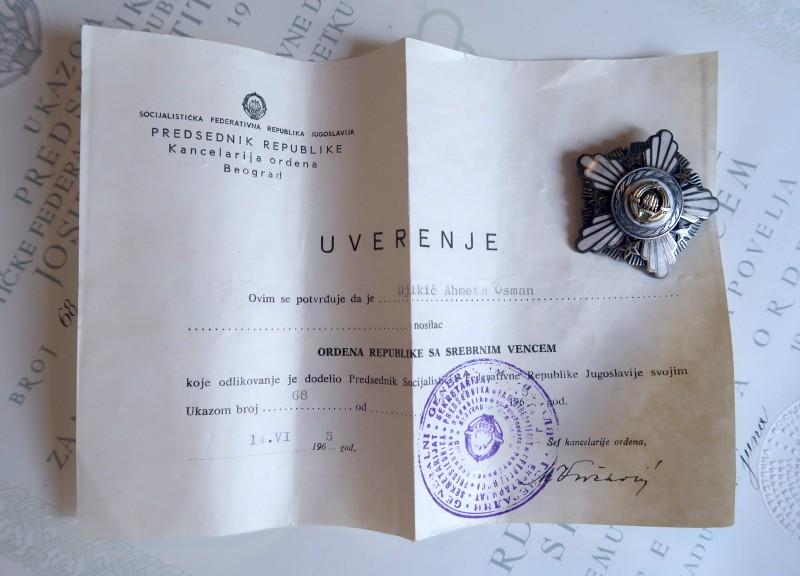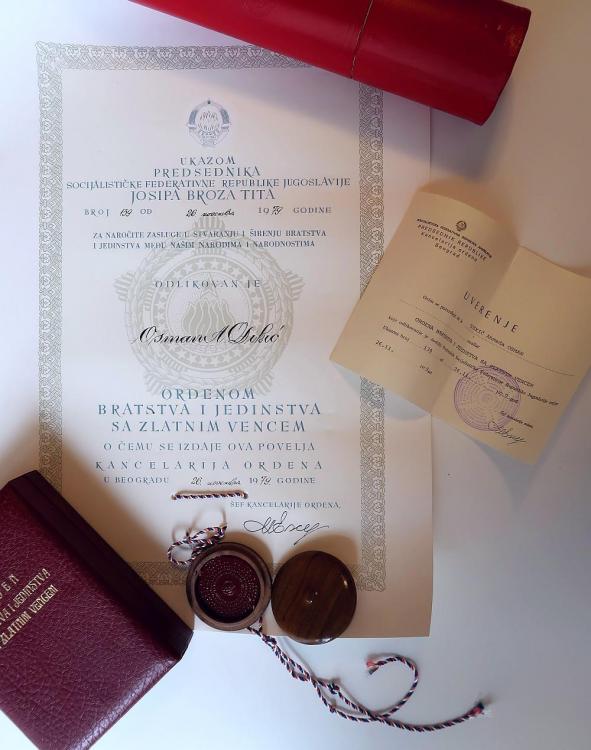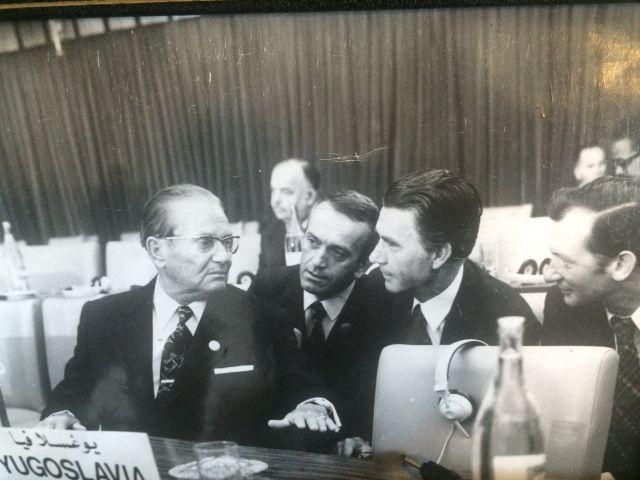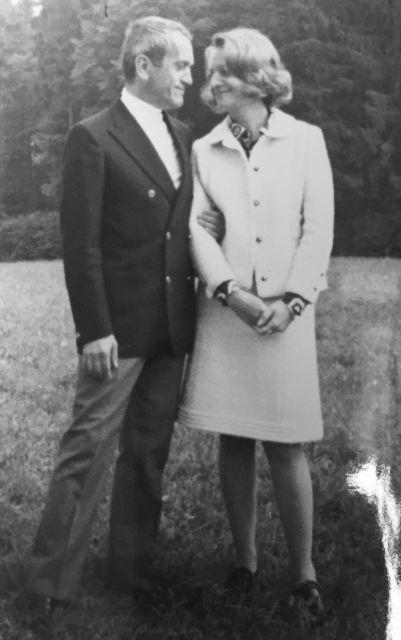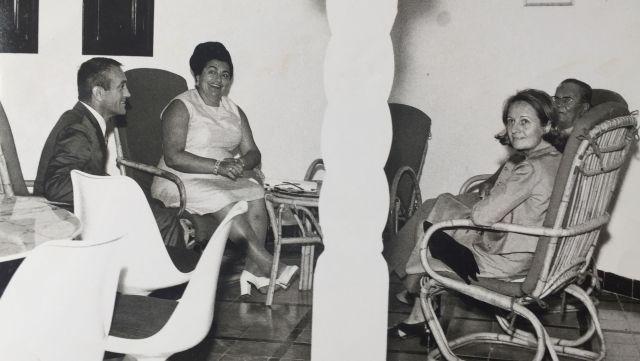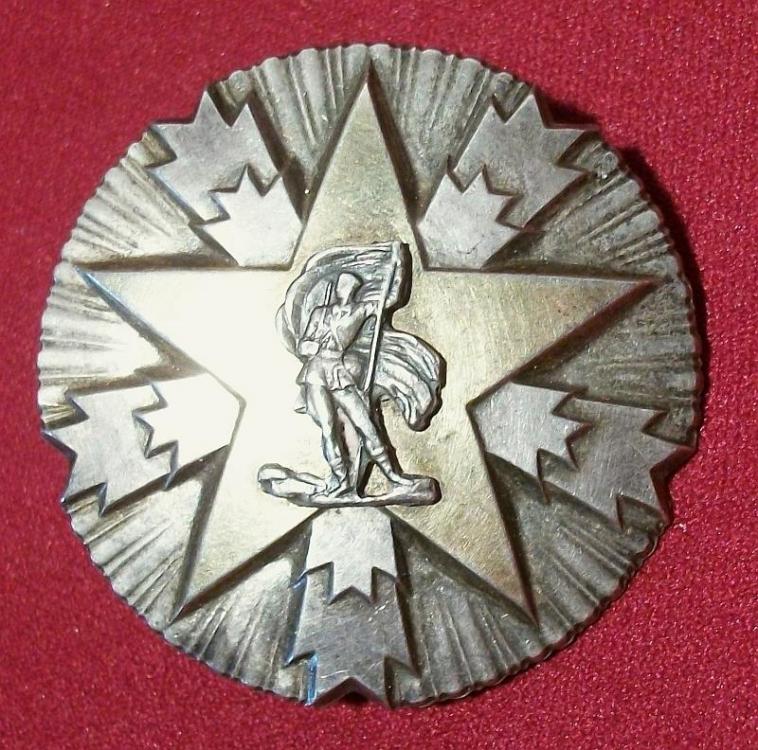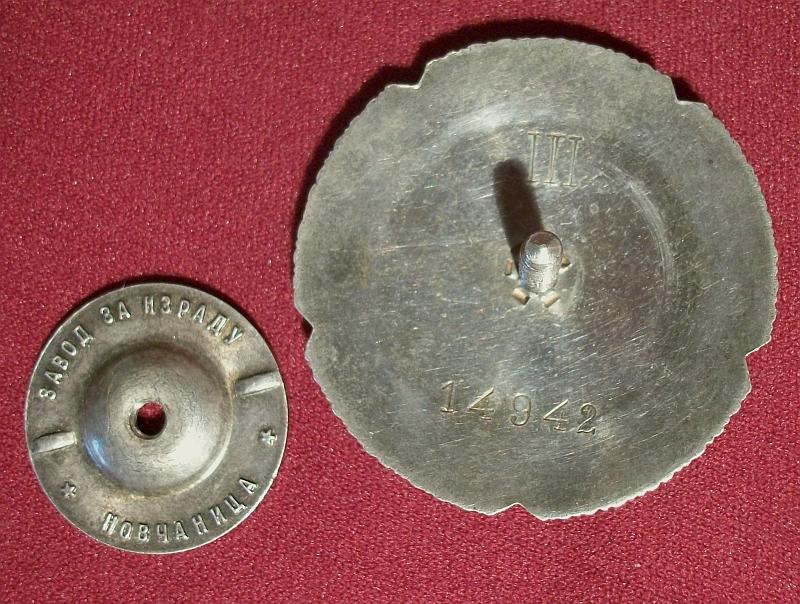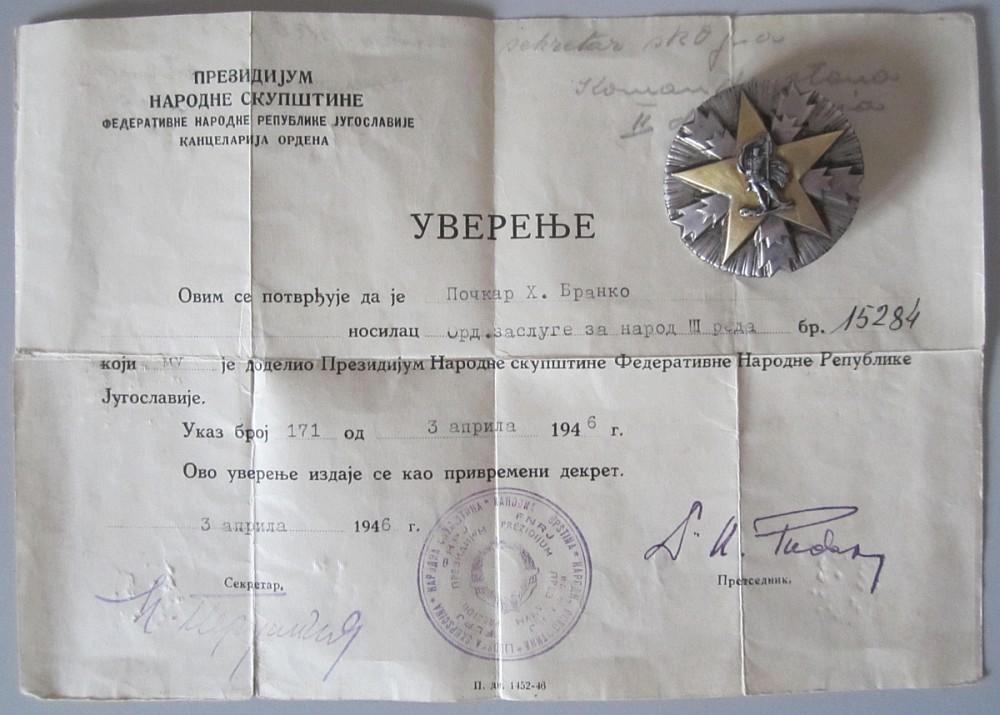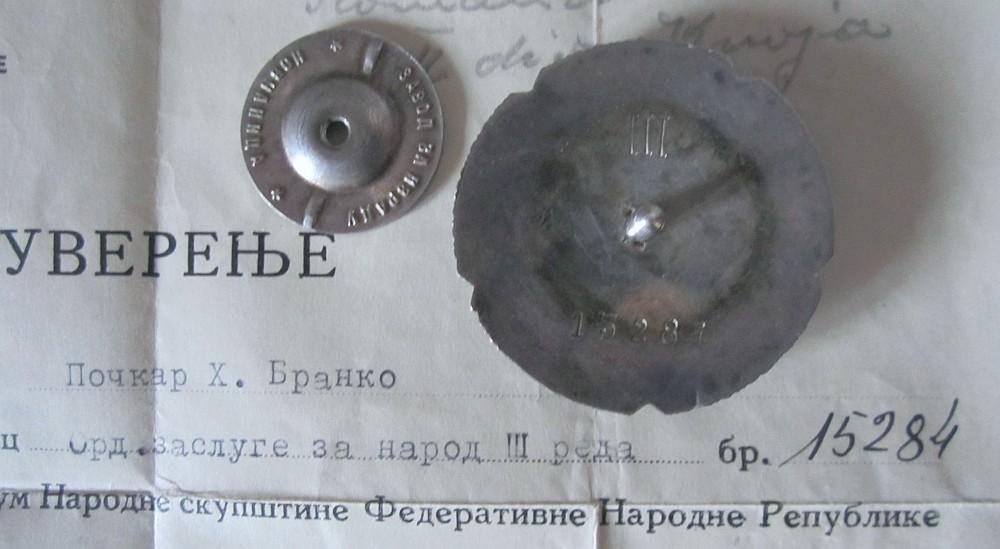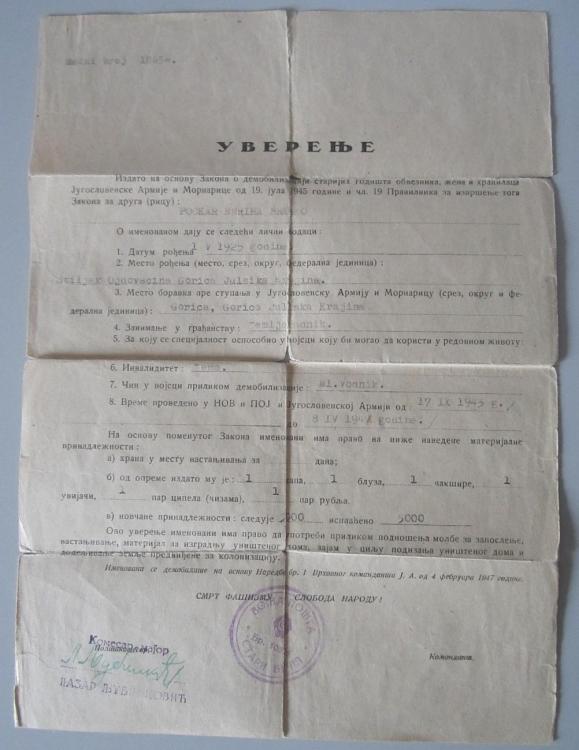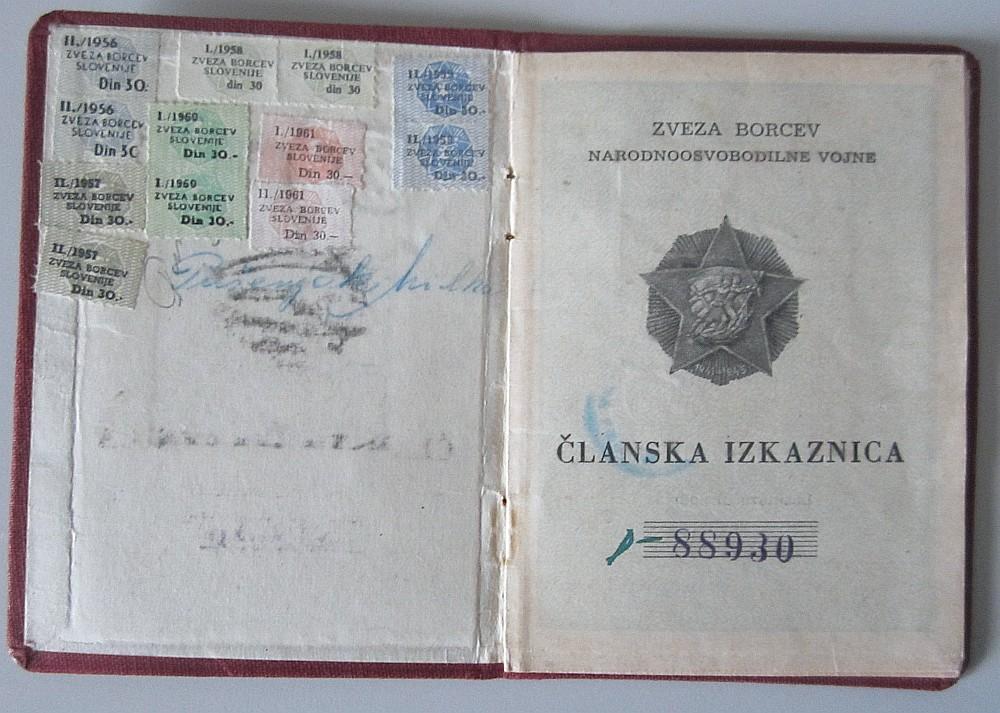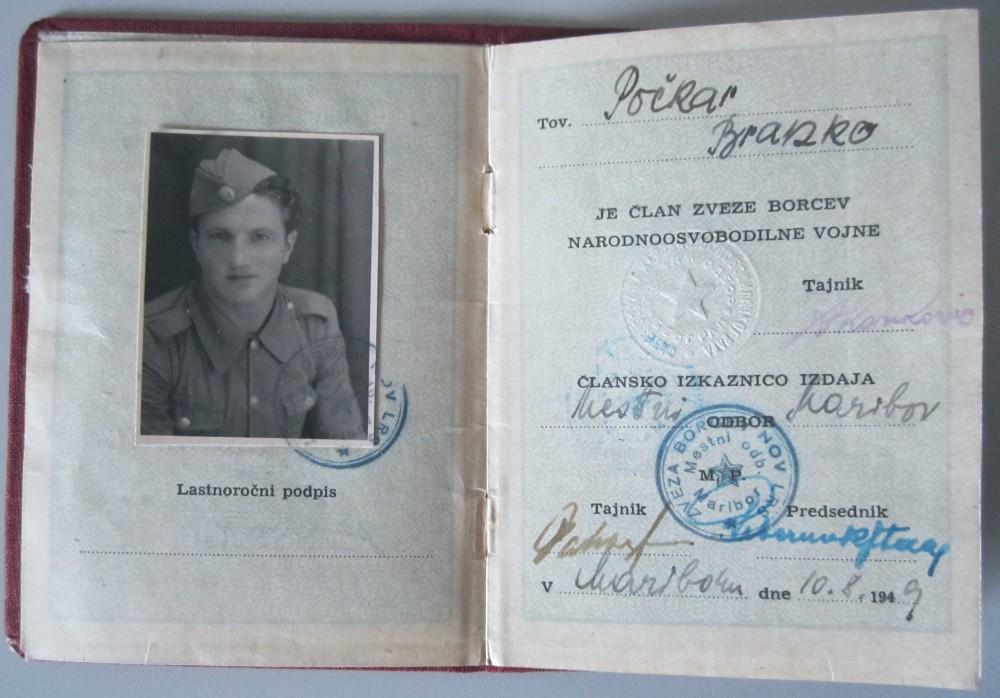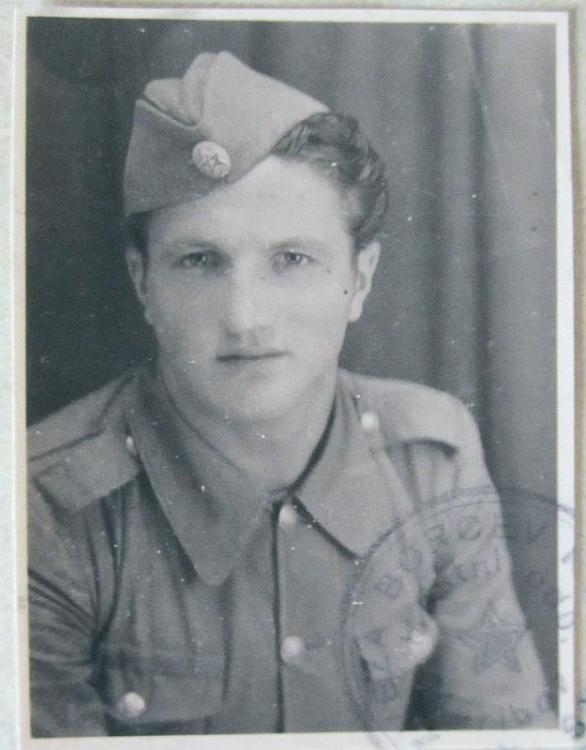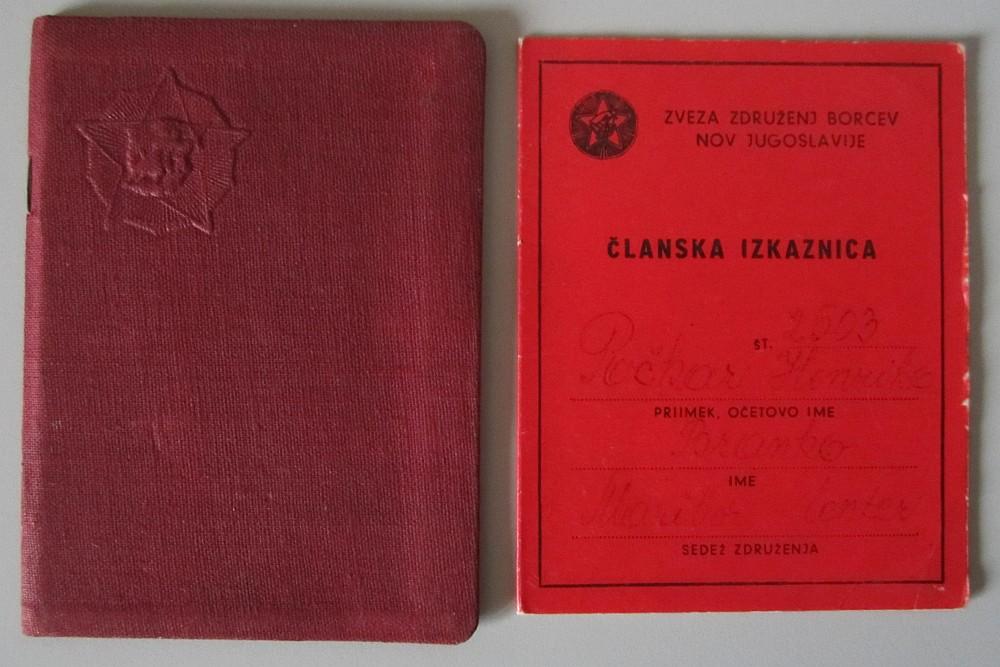-
Posts
204 -
Joined
-
Last visited
-
Days Won
1
Content Type
Profiles
Forums
Blogs
Gallery
Events
Store
Everything posted by Drugo
-

Falera-et-Orbis, has anyone ordered from?
Drugo replied to Markus's topic in Southern European & Balkan States
I found about David's death here, and I am very sorry about it. He wasn't an old man, and I haven't been in touch with him in years now, but we exchanged many many emails back in the days when I was starting my collection, and then again. I remember him as a tall, red haired gentleman and kind person. Perhaps most of you know him only as the "medals dealer", but David was an important figure in Slovenian modern history: Born in 1962 in Kruševac (Serbia, then just another republic of the SFRY), as a student in the 1980s he wrote for the Slovenian magazine Mladina, a left-wing liberal and outspoken Slovenian magazine at the time. In 1988, the magazine published a series of documents from a secret meeting of the Central Committee of the Communist League of Yugoslavia, with an alleged plan to arrest a number of Slovenian journalists and dissidents. At the time, the Yugoslav People's Army (YNA/JNA) was the strong arm charged of protecting and enforcing the socialist regime's grip in Yugoslavia. After the publishing of the article, the army arrested David Tasić, Janez Janša (later to become Slovenian Prime Minister in the 2000s and early 2010s), Ivan Borštner and Franc Zavrl, charging them with "betraying military secrets". As such, they were tried by a military, not civil court, and the trial was held entirely in Serbo-Croatian, despite the four of them were Slovenian. The trial* was held behind closed doors and the alleged secret papers the four were charged for were never disclosed in court. They were all sentenced to prison in October 1988, with 4 months to 5 years sentences. David Tasić got 10 months. All four were later released in August 1989, but the trial sparked such outrage in the Slovenian public opinion that it actually accelerated the struggle for greater freedom and democracy in the country, unifying different opposition streams in the country against the central government of Belgrade and catalysing the fight for independence, which came in 1991. After the independence, David abandoned the political scene, establishing one of the first independent Slovenian publishing houses. Still, he remained a well known public figure in the country, participating to public events commemorating the trial, Slovenian struggle for independence, and warning about the fragility of democratic systems and the need to always stand and defend freedom. May he rest in peace. Filip *More information about the trial can be found on Wikipedia: https://en.wikipedia.org/wiki/JBTZ_trial -

Commemorative Medal of the Partisans of 1941
Drugo replied to BalkanCollector's topic in Southern European & Balkan States
You're welcome! -

Commemorative Medal of the Partisans of 1941
Drugo replied to BalkanCollector's topic in Southern European & Balkan States
Hello Eric, This is a spomenica in itself! It was awarded to living relatives of fallen partisans. So it's the spomenica to the dead. It entitled the family to some social benefits as those of the living holders, but there was no award beside this paper. I was discussing precisely this with BalkanCollector just a few days ago, he even showed me one like this with several names on the same document, an entire fallen family! -

Socialist Yugoslavia Documented Groups
Drugo replied to BalkanCollector's topic in Southern European & Balkan States
I just noticed this one. I would not like it in my collection. The full "IKOM Zagreb" hallmark is new to me, and the position of the serial number (with a full stop?) is not correct. Besides, the case doesn't look appropriate, with that blue ribbon. -

Italian helmet... can anyone give any info?
Drugo replied to Hauptmann's topic in Southern European & Balkan States
Hello Dan, regarding the leather, as a friend of mine who is an artisan says, leather is a living thing that should be treated the same way you treat your own skin. So if you put a hand cream of any sort stay reassured that it won't do any harm, it will just be absorbed. ? Then, if you're not satisfied you can still think of alternative solutions... As for the oxalic acid, I don't know how it is regarded in the USA, I can speak for Italy and France, and here you can find it in its purest form in drugstores, DIY stores, cleaning products stores, etc. It's a white powder. Most helmet collectors use it freely to remove the worst rust from their helmets, I did use it in a couple of occasions as well. It is also used to whiten wood and clean hard surfaces. Of course, I wouldn't leave it around kids to play with, as I would not leave them with a box of powder detergent. Use a pair of latex gloves for extra precaution, but beyond that stating that it is "extremely dangerous", is, frankly speaking, nonsense. As far as you don't eat it by the spoon, sniff it in extreme doses, or anything else that I hope you would not do with any cleaning detergent, it's absolutely safe. Just FYI, you can check on Amazon the hundreds of people who used it for the most different purposes. If you are still not comfortable, I would say just check some common degreasers in commerce, and go with one of those, though the result might be a little less effective. Check out the composition, many of them will contain oxalic acid or other similar acids. Here's an Italian M33 that I found in Macedonia and cleaned conservatively with oxalic acid the way I described, just to avoid any further rust formation and remove major dirt: -

Italian helmet... can anyone give any info?
Drugo replied to Hauptmann's topic in Southern European & Balkan States
Hello Dan, please, PLEASE don't do such a thing! ?I never understood how this approach would count as "refurbishment". Would you refurbish the Monna Lisa by removing the paint from the canvas and redoing it identical? ? As for your questions, I think you found an Italian M33 probably used in the Spanish Civil War. These were usually painted over in darker green, as yours appears to be. Today, many are found in the US after a large stock was shipped to the States now some decades ago, and they are most often in very poor conditions. This one is actually quite right.... As for how to proceed, I would go for a light solution of oxalic acid and water (1/10 or even 1/15 to start with, then you can add depending on the result), passing it gently over the shell with a sponge in order to remove as much rust as possible and bring the remaining colour to the surface. Proceed this way until you're satisfied, in the end you can rinse it with some bicarbonate to be sure to remove all the oxalic acid, since it is a great rust remover, but in time it can confer a greenish patina to the metal, which you want to avoid. If it weren't for the liner, you could have simply immersed the shell in a bucket of water and oxalic acid for an hour or two, but you can't because of the leather. You can't really take off the liner from a M33, especially in these conditions, you risk doing more damage than good. I don't know what you mean by "white leather liner", I've never seen such. What you have there is in my opinion the standard Italian brown leather liner, it's simply very dirty and aged, and therefore looks lighter. I suggest to clean it with simple water and than massage it a few times with a hand cream, trying to soften the leather as much as possible. It will also bring back some of the original tan. If you do, show us the result afterwards! ? Best, Drugo -

Lot of awards to a Yugoslav diplomat and ambassador
Drugo replied to Drugo's topic in Southern European & Balkan States
Hello 922F, I feel very lucky indeed. I am only sorry I was not able to recover the missing bits and pieces. As for additional information about Đikić's career, I am sure that digging thoroughly online more could be found. For example, here are the minutes from the XIX Congress of of the International Federation of Film Archives, held in Belgrade in 1963: And more important, a letter proving his residency in New York as Charge d'Affaires of the Permanent Mission of the SFRY to the United Nations, in 1960: Quite a fellow, our Đikić. -
I'd like to present you a nominative lot that I just acquired and that belonged to Osman Đikić, a career diplomat of the Socialist Federal Republic of Yugoslavia. The biographical information comes mainly from a 2004 online article (and a rather nice one for those of you who speak the local language). Osman Đikić was born in Mostar, Bosnia, on 7 September 1921. His father, Ahmed, was a teacher, and Osman got his first name in remembrance of his uncle, who died of tubercolosis at the age of 33, in 1912. He was a famous poet and dramatist at the time of the occupation of Bosnia by the Hasburgic Empire, and a political activist struggling for an indipendent, multi-ethnical Bosnia. After finishing high school, in 1940, Osman enrolled in the Faculty of Law of the University of Belgrade, but by April 1941 the country is invaded by the Axes forces and he rushes back to native Mostar. There, he joins the youth antifascist movement and, later in the same year, the partisan movement. During the war he is soon noted as being very smart and knowledgeable, and he gets involved in political and cultural activities in several batallions' headquarters and partisan units. Witnessing this period are the documents for his Spomenica 1941. Unfortunatelly, the original booklet and the decoration are lost, but we have the related transport ID and two later booklets, from 1985 and 1990. It is during the final days of war, on 3 May 1945, that he is awarded with an Order for bravery. Unfortunately, while the box bears his name the serial number on the order is not matching the one on the certificate. Soon after, Đikić starts his career at the Ministry of Foreign Affairs. On 15 November 1947, he is awarded with an Order for Brotherhood and Unity II Class and an Order for Merit to the People II Class. Fortunately, this time they are both preserved with their certificates. By 1950 he is finally sent abroad, as a diplomat at the Embassy to Finland. From that period, we have a diplomatic ID issued by the Finnish authorities: Five years later, and he's in Budapest. Again, a diplomatic ID from the Hungarian authorities, from Januar '55 to April '57. He must had been a witness of the Hungarian Revolution and Soviet repression. I shall remind you here that in November of 1956, Imre Nagy spent 18 days at the Yugoslav Embassy in Budapest, in a desperate and unfortunatelly unsuccessful run for his life. At some point, it seems, Osman Đikić was employed also in Paris and New York, but I don't have any documents to support that. No matter what, in 1965 he is back in Yugoslavia, and gets elected as a deputy at the Parliament of the Socialist Republic of Bosnia and Herzegovina. He will again hold this position in the '80s, after definitely retiring from the diplomatic life. On 14 June 1965 he gets another award, an Order of the Republic with Silver Wreath. It is still of the first type, with five torches, while the matching certificate has a 6-torches coat of arms. It is in the 1970s that he reaches the peak of his career. First, he is appointed Ambassador of the SFRY in Algeria, than Ambassador in Finland. A series of diplomatic passports recall his period in Finland, the first one expiring in 1982, then a civilian one, and finally another diplomatic passport when he was already retired, in the early 1990s: In 1979 he got an Order of Brotherhood and Unity with Golden Wreath, which is unfortunatelly missing, except for the box and certificates. Given that this one had no serial number, it should be relatively easy to replace, with no real harm to the integrity of the lot. Osman Đikić was a fine polyglot. Among less spoken languages, he was very fluent in Finnish, up to being the first person to translate some Finnish poems and literature to Serbo-Croatian. Furthermore, he was a fine Albanian speaker, serving in one occasion as interpreter for Tito and Enver Hoxha. Here's a photo portraing Tito, Osman Đikić, Lazar Koliševski (general of the JNA/YPA and National Hero) and Jure Bilić (famous Croat politician at the time): Here's with his wife Vojka Smiljanić-Đikić, also a translator and poetess, in the company of Jovanka Broz and Josip Broz Tito: Osman died somewhere in the mid-90s in Sarajevo. Vojka in 2016.
-
Dear all, on behalf of an Italian friend, I would like to ask your help in understanding the reason why this miniature of the St. Sava order that he recently found has a wrong date on the reverse, i.e. 1882 instead of 1883. Have you seen this before and do you know the reason why? Many thanks! Drugo
-

Falera-et-Orbis, has anyone ordered from?
Drugo replied to Markus's topic in Southern European & Balkan States
I should apologise and state clearly that what I had in mind when giving my opinion was purely based on considerations regarding orders and medals from Yugoslavia. I have no expertise on other countries and refer to more educated opinions for that, such as the ones from Rusty and Stuka. This is a Slovenian based seller and I am not aware where he sources his more exotic orders from. Obviously, offering a mixture of originals and replicas does not talk in favour of a seller, but in general you should be on the safer side with Falera et Orbis when dealing with Yugo orders. What I would not expect from this website is to order one thing in picture and get another thing in hand, or defected, or not receiving anything at all... As for prices, they are certainly inflated on this website compared to his open auctions on ebay, perhaps by some 20% compared to final auction prices. I've seen worse around in terms of respected selling houses, and with the same composition of originals and fakes that can easily trick some less experienced collectors. Bottom line, you are the kind of customer that would buy here if you're interested in a very specific/fine piece and want to avoid the hustle of an open auction. -

Falera-et-Orbis, has anyone ordered from?
Drugo replied to Markus's topic in Southern European & Balkan States
Falera-et-Orbis is managed by David Tasic aka emonlaib on ebay. I never placed an order through his website and can't say about responsiveness etc., but in general terms it should be absolutely trustworthy. -

Yugoslavia Different types of Yugoslav Order of Bravery
Drugo replied to paja's topic in Southern European & Balkan States
That seller is a disaster, it hurts every time I see him splitting documents and orders. Nobody will EVER be able to put those pieces back together once sold to different bidders! I bet he would make the same or more money just selling the entire lots together, but he doesn't hear from that ear... -

Commemorative Medal of the Partisans of 1941
Drugo replied to BalkanCollector's topic in Southern European & Balkan States
Nice specimens, BalkanCollector. 50 spomenice in the collection is quite something. I have some of these booklets, but unfortunately not the matching awards. We come back to the old story of our sellers eager to split papers and awards all the time... Eric G, the spomenica you showed is 100% original. I believe the screw was welded at a certain stage for some reason, and those incisions on the left side are the result of a tight bench vise grip. -
My understanding is that men and women versions should be differentiated only by the suspension, classical light-blue triangular one for men, and a ribbon of the same colour for women. I am not sure about the reason for different designs, though.
-

Yugoslavia - Order of Merits for the People III
Drugo replied to paja's topic in Southern European & Balkan States
I don't believe that boxes were differentiated according to shaft length. What usually happened was that the longer shafts or sharper ends would simply pierce the inner fabric of the box, making space for the shaft. As for what concerns the reason why there are different shafts, I don't think they were shortened at a later stage, as Eric rightly states, the cut would be obvious to detect. Why they came out in different lenghts, it's hard to say. -

Yugoslavia - Order of Merits for the People III
Drugo replied to paja's topic in Southern European & Balkan States
Unfortunately not, this is all there was on offer... Here's another OZN III early ZIN type that I had once and gave away after getting the above one. It's a close serial, 14942. What is interesting is that the shaft on this one is much longer, I don't know why. This is something I noticed from time to time, on some other early ZIN orders. It was probably not very comfortable to wear on the chest. -

Yugoslavia - Order of Merits for the People III
Drugo replied to paja's topic in Southern European & Balkan States
Nice orders, everybody. Given the question about serial numbers and awarding dates, I am sharing pictures of a nice early OZN III class with documents from my collection. Serial number 15284, awarded in April 1946 to the Slovenian Branko Pocar. Luckily, a few more papers allow to add something more about this soldier, which is almost never the case with Yugoslavian awards... The award came with his military discharge: Branko was born on the 1st of May, 1925 (so what else could he become if not a partisan? ), in a small village on the Italo-Slovenian border, Štjak. He was a farmer. He joined the Liberation Front on 17 September 1943, at the age of 18. He served until 17 April 1947, leaving the ranks as sergeant and with a severance pay of 5,000 dinars. In august 1949, he was in Maribor, Slovenia. Here he joined the veteran's association, SUBNOR, and thanks to this we are able to know his face: He kept paying his membership until 1988... In addition to this, I can only add that I have my grandfather's certificate (unfortunately the certificate only, the award went missing), stating that he got his OZN III class on 7 October 1947, order number 48447. Balkan Collector mentioned an order 93k awarded in April 1946. As we know, Yugoslav orders were not awarded strictly in progressive order, so without a certificate pointing to the exact year is pretty much anybody's guess... Still 1946-47 seems the most reasonable period. -
I'm reading, with some delay, this and other interesting discussions. I would like to hear your opinion about this one, recently popped up on ebay. I'm puzzled by more than just the screw nuts. Cheers, Drugo
-

Yugoslavia Yugoslavia Parachute Instructor badge in gold
Drugo replied to achern's topic in Southern European & Balkan States
It's a good point. It might have to do with the years of production of the standard silver and the golden ones? Considering that the latter were produced only in late 1980's, production quality in those years was fastly declining, we know it from all other orders and decorations produced at that time. It would be nice to know when was actually the production of silver badges interrupted? It would be very interesting if we find out that it was before they started producing the gold ones! Could it be the case? -

Yugoslavia Yugoslavia Parachute Instructor badge in gold
Drugo replied to achern's topic in Southern European & Balkan States
Emanuel I am sorry but I really don't understand your long comment, nor what I am supposedly "kicking back". I made one single point and one comment. The point: IMHO, I am not sure if the badge offered on ebay is a fake or not. I said my uncertainty could be naive, meaning this is a fake and I am too much of a believer, I don't know. I don't care if it is original or fake but for the sake of knowledge, because a) it is not mine, and b) in any case I'm definitely not going to bid at such a crazy price, no matter the rarity (sorry achern ). The comment: I didn't realise you were ironic talking about Singapore, and frankly I still don't get it (sorry, I haven't been probably trained for 2500 years in it ). The only way I understand it now is that you meant that even the first one posted by achern in post #1, back in 2012, is a fake? In that case, you'd be the first one here to state that and I am truly interested in hearing your opinion about why is that, because I am a yugo collector but I am more than ignorant when it comes to these specific badges, especially the golden ones, and I have much to learn! Thank you. If on the contrary the first one is solid and the eBay one is not (BTW, it is indeed extraordinary that the same person has two of these rare birds in his hands, no matter the country of origin), I would still not get your ironic point. And yes, fakes are ruining the fun of this hobby, as much as prima donnas the pleasure of a constructive exchange of minds and knowledge. And I know you all have to share and teach me a lot, here. Thank you, Filip -

Yugoslavia Yugoslavia Parachute Instructor badge in gold
Drugo replied to achern's topic in Southern European & Balkan States
Maybe I'm too naive, but I would like to see this ebay badge in a different light (literally), before judging... The spots on the enamel concern me the most, and would make me cautious, but again, better pictures would be good. As for Singapore, Emanuel you should check the first post in this topic... Cheers! Drugo -
This just appeared on ebay, it's always the same Spanish seller. Spanish medals, in all different versions, are among the most faked Yugoslavian medals. By the way, these are VERY rare, but this seller appears to have enough of them to picture two of them in the same picture, obverse and reverse, and they are both so identical and in pristine condition that he doesn't need to tell you which one you will receive.
-
Hello Paja. About the screwplates: I did say they look strange, but I am not so sure they are fakes, I just wanted to express the idea that they are not one part with the order, and they can be switched. Anyway, I sent a couple of pictures to a friend of mine, who is an expert in soviet orders and screwplates in particular, and in his opinion these screwplates are ok, he says they might have been covered in silver but they are original. As for the 5xxx serial curse, this is indeed the range of Partisan stars that were being discussed as fakes/originals on the domestic forum. I remember I collected all the suspicious stars at the time in one single picture (therefore I am sorry if some users might perhaps recognize one of their owns, I did this only with a "scientific" purpose). It is interesting, because at the time the main topic of discussion was the quality and details of the wreath, while now you are talking about the reverse, but in both cases the range is mostly the 5000-5999 one. I repeat: these stars were discussed as copies because of single oddities in each of them, but in the end the conclusion was that it is probably just a slightly different stock and that they are original, because the enamel, which is the most difficult part to forge (even if you have the original tools, enamel is more about the specific quality of the material used, and it is very hard and expensive to copy the Soviet enamel from WWII, compare for example the much thinner and lighter Yugoslav enamel on post-war home-made partisan stars). Of course, I don't have the ultimate answer to your doubts, but I don't feel too much uncomfortable with these stars that you pointed out - at least yet. All the best Drugo


